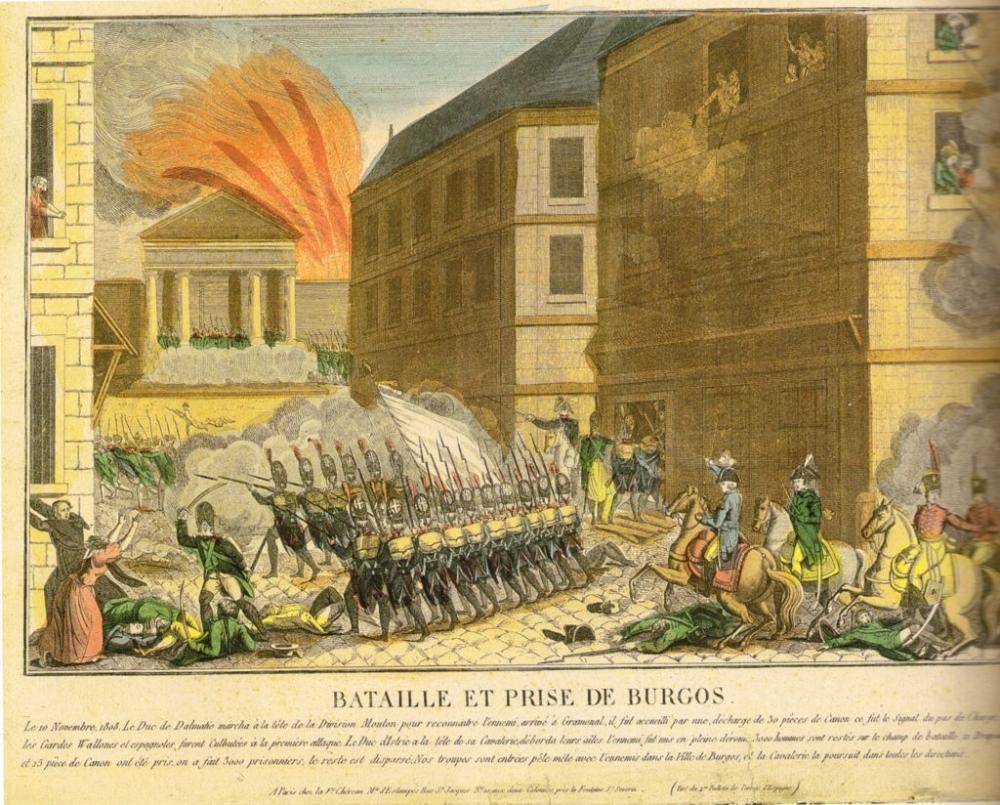Burgos, due to its privileged geographical position in the iberian peninsula, became a key bastion during the war. The dilapidated medieval castle was transformed by order of Napoleon himself into a defensive rear stronghold if retreat was necessary, and a logistic centre for his army.
He assigned a garrison of french troops to secure the city, a city where almost every important persona of the time went, and where hundreds of thousands of soldiers went in and out daily.
From 1808 on, the castle and his bordering hillsides were completely transformed when a new fortified facility was erected, composed by three defensive trenches. Also another stronghold was established on San Miguel mountain, known as “Hornabeque”. Until 1812 the garrison guarding the castle didn’t have significant problems, but that autumn, duke Wellington arrived to Burgos, chasing part of the french army destined in Portugal, after he beat them on the battle of Arapiles. Believing that the capture of the castle would be easy, he planned different assault strategies to take the fortress. But the french defenders, leaded by the french brigade general Dubreton were able to put up a fierce resistance, hanging on the harrying of the english lord for 35 days.
To do this route please download the following brochure: The siege on the castle of Burgos




